Theory of KineGrams
The theory of kinegrams: proposals for visuo-kinetic representations of grammatical meaning.
Selected and adapted from « The meaning of meaningless grams - or emptiness revisited », Cognitive approaches to language and linguistic data. Lód Studies in Language. Wieslaw Oleksy and Piotr Stalmaszczyk (eds), Frankfurt/M : Peter Lang, 2007.
1. The gesture instinct
No matter how abstract our thinking may appear to be, it can only be manifested through the use of muscles in our bodies. (Hannaford, 2005, p.17)
Using gesture symbolism to make sense of grammatical structure sounds like a strange and daunting task. Yet perception and motion, which are vital to early cognitive development (Piaget & Inhelder, 1966, p.24), are the foundation of all higher-order knowledge and remain so throughout adult life (Hannaford, 2005, p.16). Perception and motion are also inherent components of language: as we speak, we physically produce and perceive articulated sounds. The speech mechanism itself is the result of intense physiological activity. Energy is required to expel the air-stream from the lungs and to set the movable parts of the articulators into action (Gimson, 1980, pp.9-19). Also, we engage in body-motion communicational behavior as we talk (Birdwhistell, 1970, p.8): kinesic acts are naturally and necessarily integrated with oral expression (Key, 1975). The gestures that universally and automatically occur with speech (McNeill, 2005, p.4) are an integral part of the linguistic system which is fundamentally verbal and gestural (McNeill, 1992, p.4). In short, gestures and speech are synchronized carriers of meaning.
2. Unwitting gestures of the abstract
An important aspect of abstract (and metaphoric) gesticulation is that speakers spontaneously create manual symbols of ideas, topics, events and situations as they present, explain or report things. Discourse objects are formed and presented while differentiate loci for ideas and events are defined and pointed to. Common gestures of the abstract in Western languages include the cup of meaning and the PUOH (palm up open hand) gestures (McNeill, 1992, pp.145-179):
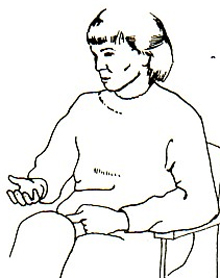
Figure 1 - The cup of meaning (McNeill, 1992, p.152)
Assuming that this type of gesture symbolism brings to light invisible mental processes, then abstract pointing and manipulation gestures clearly signal that experience is both entified and spatialized.
3. Gesture symbolism
As noted above, the hands are constantly engaged in the process of creating images of bounded objects or shapeless blobs of substance that stand for topics or events. Clearly, the manual activity displayed is symbolic in nature. The hands represent something other than themselves, namely the mind/brain sorting out fragments of experience or processing chunks of meaning. Quite remarkably, the symbolic creation and manipulation of conceptual objects is also encoded lexically, as noted by Eve Sweetser in her remarks on the use of perception and motion verbs to code common cognitive events:
There is (...) strong evidence that mental activity is seen as manipulation and holding of objects: we grasp a new idea; discard a faulty assumption; or use a hypothesis as building-rock in the foundations of a theory. Etymologically, parallel semantic developments are to be observed in hypothesize (< put under, as a foundation), comprehend (< grasp), or surmise (< put on / over, i.e. on top of what is already hypothesized). (1990, p.20)
4. The idealized body of cognition - or IBC
Briefly defined, the idealized body of cognition is the imaginary body that language invokes in a number of conventional metaphoric expressions describing fundamental cognitive and pragmatic events, such as seeing or grasping for understanding; handling or manipulating for controlling; constructing, setting up for elaborating; giving or making for causing; taking for accepting; wavering for hesitating, etc. The perceptual and motor scenes imaginatively performed by the IBC typically involve the cognizer's:
- EYES for watching, observing, examining, etc.;
- HANDS for giving, taking, touching, holding, binding, shaping, forming, building, etc.;
- FEET/LEGS for standing and moving backward, forward or along, the imaginary paths of action, discovery, reasoning, etc.
The three dominant organs of the IBC take part in fictive perceptual and motor stories which are entrenched in lexical usage: stories of seeing, viewing, considering, grasping, forcing, blocking, constructing, accepting (Lat. capere to take'), rejecting (Lat. jacere to throw'), etc. The IBC also adopts imaginary socio-physical stances: standing (e.g. What is your stand?) bowing (e.g. Don't bow to pressure!), stooping (e.g. Don't stoop to his level!), wavering (e.g. They waver between all out liberalism and state control), evading, dodging (e.g. The president skilfully dodged the issue) shrugging (off), etc. The IBC is a symbolic construct, shaped by language and culture. It is obviously abstracted from the human body - or more accurately from our body image. It is a body that comes to life in discourse. The unconscious motions, gestures, and postures of the IBC, which ordinary language simply evokes, can be consciously and purposefully invoked. How? By performing the imaginary mental gestures physically, that is by aligning the real body with the IBC. This amounts to a physical instantiation of the imaginary postures, gestures and motions of cognition. Standing, retracting, placing, grasping, offering, etc. can be performed and the body-motion conceptualisation of abstractions may be achieved by acting out the mental gesticulation of the IBC as we would like to show in the final pages of this article.
5. Using gesture symbolism to represent the symbolic units of grammar
Man can confidently rely on the senses to supply him with the perceptual equivalents of all theoretical notions. (Arnheim, 1969, p.233)
New body-based models of language functioning can be developed that give shape to grammatical meaning, thus making it more graspable. This can be done because there are systematic perceptual and motor analogues of grammatical concepts that lend themselves to meaningful visuo-kinetic representation. For example, illuminating sensori-motor connections may be metaphorically established between:
- May and wavering in May I use your phone? (deontic) and I may be there to meet you (epistemic), as the body moves gently from side to side to code oscillation between the desired (or expected) course of action (Go ahead, use my phone!; I will greet you at the sation!) and its less favourable alternative (I won't let you use my phone!, I can't make it!).
- Zero determination (ø N) and the grasping of essentials in ø life, ø nature or ø beauty, as a hand seizes an amorphous mass of invisible semantic substance.
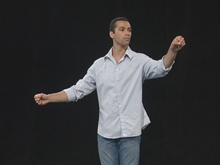
Figure 2 - The grasping of essentials
Space, matter and gesture can be integrated into a single representational system: the kinegrammatic description of grammatical meaning and functioning (Lapaire & Masse, 2005). Kinesic imagery may be artificially produced to give shape to the abstract concepts of grammar (in appropriate pedagogical contexts).
6. Developing a new visuo-kinetic approach to grammatical meaning
Movements of the hands are perfectly capable of expressing abstractions. (McNeill, 1992, p.163)
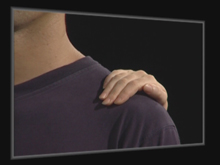
Figure 3 - Hand coding the affixation of -s, -ed or -ing to the verbal base
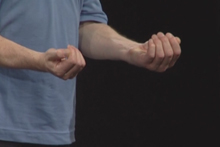
Figure 4 - Hands coding the abstract possession mechanism associated with the present perfect Experience previously acquired (in the past) and now held / displayed (in the present)
KineGrams are metaphoric gestures that use the visual-kinesic medium to construct imagistic representations of core grammatical concepts (e.g. determination, assertion or deontic necessity). KineGrams may also enact key morphosyntactic mechanisms (e.g. affixation, tag-questioning, passivization). By representing grammatical meaning and staging invisible grammatical processes, KineGrams provide imagery for the non-imageable, as the following examples suggest:
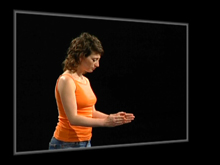
Figure 5 - (Solid) fact! Using the simple present (V-s) in statements to present or establish solid facts
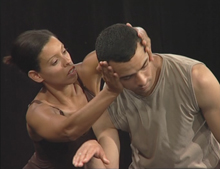
Figure 6 - Dramatization of voice and argument structure The agentive subject manipulates the passive object in the prototypical active construction
KineGrams were originally designed to help French highschool students understand how English grammar works (Lapaire, 2002, p.635). The smart moves - a phrase borrowed from Hannaford's study of how special integrative movements can enhance learning (2005, p.17) - have since evolved into a more elaborate and aesthetically pleasing system of body-motion conceptualization, now available on DVD (Lapaire & Masse, 2006). The metaphoric gesture packages are used with beginners and advanced learners alike, at all levels of foreign language instruction.
KineGrams create postural and gestural analogues of core grammatical phenomena based on an image-schematic analysis of grammatical meaning/processes. Short gesture performances are thus presented that act out the semantic configurations and pragmatic mechanisms typically associated with selected grams or constructions. For instance, the force-dynamic or manipulative properties of deontic must are conceptualized in terms of pressure: pressure to act (e.g. You must get your work done!), pressure to comply with the speaker's wishes (e.g. You must come to my party!). In the kinegrammatic performance that accompanies remarks on the socio-cognitive properties of deontic must, one of the manipulator's hands is shown pressing on the manipulee's back to obtain forced motion towards the target action. Likewise, the weaker force-dynamic but stronger directional properties of deontic should in You should behave yourself or You should see a doctor become more apparent as the manipulator is shown exerting lighter pressure on the manipulee's back with one hand, while showing the right way with the other to indicate the appropriate course of action.
It is important to note that KineGrams are coexpressive with LogoGrams - short metaphoric expressions that capture the image-schematic nature of grammatical meaning. It is because comparative structures are verbally defined in terms of perfect balance (as...as...) or imbalance (not as... as...; -er / more ... than...) that a kinegrammatic representation of the conceptual organization of comparatives may look like the following multi-armed statue, standing in the temple of comparison:
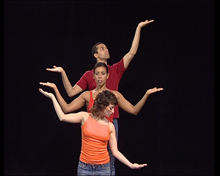
Figure 7 - Comparatives A visuo-kinetic representation based on the BALANCE-schema.
In this embodied figuration of the system of comparison, the relative positions of the arms and shoulders are used to code:
- The states of balance (as...as...) or imbalance (not as... as;-er / more... than...) typically associated with the notions of sameness, identity, equality, superiority, inferiority, etc.
- Higher or lower qualitative levels: as good as, as exciting as (UP), as bad as, as disappointing as...(DOWN).
The open palms support imaginary objects of conception: the reference item - or standard of comparison, and the compared item. Although the kinegrammatic figuration of comparative structures is pure choreographic invention, the hand shapes and the various arm positions are evocative of the spontaneous cup of meaning (McNeill, 1992, p.152) and PUOH gestures that naturally occur in speech (McNeill, 2005, p.49). Holding and balancing invisible discourse objects are also common kinetic acts. This is proof enough that KineGrams are not entirely removed from ordinary paralinguistic gesticulation. As other kinds of abstract gestures (Arnheim, 1969, p.117), they require the creation, location and manipulation of entities inside imaginary conceptual regions.
7. Kinetic form and grammatical meaning
Different bodily attitudes code the different cognitive stances of the speaker-cognizer. (Stance is related to Lat. stare to stand). As the shifting arm positions of the moving statue suggest (Fig. 4), each grammatical construction symbolizes a given conceptual arrangement and mode of cognitive processing. The postural and gestural analogues of not as... as and -er/more are different because the state of imbalance is not construed (conceived) exactly in the same way:
- In the not as... as construction the first item does not measure up (or reach up) to the second: He's not as smart / intelligent as his sister.
- In the -er / more... than construction, the first item stands higher (on the scale of comparison): She's smarter / more intelligent than her brother. The marker -r effects the metaphoric placement of the compared item above the reference item. Although empty in a strict lexical sense, -r is not meaningless since it codes a cognitive process.
A simple visuo-kinetic description of this kind makes it possible to redefine grammatical meaning in terms of placement, linkage and perspective. As a rule, distinct patterns of gesticulation are adopted to express subtle variations in the conceptualisation of experience and construal operations morphologically encoded in the grammar (Croft & Cruse, Cognitive Linguistics, 2004: 40).
8. KineGrams and blending (Fauconnier & Turner, 2002)
KineGrams blend perception and conception, verbal and gestural metaphor. The dancers performing the orginal gesture phrases on the DVD and the language instructors performing their own classroom adaptation of the gestures all act out scenes of intellectual vision, mental manipulation, metaphoric motion, etc. They touch, feel, grasp, hold and point to objects or blobs of substance (which stand for notions, meanings, events or referents); they travel along paths (which may be those of life, time, action or reasoning); they physically and mentally move through imaginary areas; they enter various regions or domains. The physical enactment of mental gestures within a single, blended space - material and conceptual - achieves the symbolic union of mental and physical experience.
The physics and metaphorics of epistemic modality developed in Grammar in Motion (Lapaire & Masse, 2005) provides a case in point. Manual gestures and physical stances metaphorically express mental operations and modal stances. Facing the camera, the performers take a quick glance at the past. Once they have looked back and caught a glimpse of some former situation, they form strong or weak conjectures about what might, may or must have happened then. They manually reconstruct the past by piling up invisible building blocks:
- Strong conjectures (e.g. She must have missed her connection) and consistent interpretations stand because they are firmly based on solid facts or substantial evidence. (Consistent is related to Lat. consistere to stand firm).
- Weaker conjectures look shakier. More tentative gestures are made as the interpretive structure is erected. The builders / cognizers look interrogatively at the swaying conceptual edifice (e.g. She may have been delayed).
- Finally, preposterous interpretations and inconsistent views don't stand: they are brushed aside and instantly collapse or fall apart (e.g. She can't have forgotten).
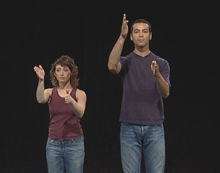
Figure 8 - Reconstructing the past
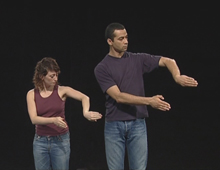
Figure 9 - Brushing aside / dismissing (thoroughly improbable conjectures) E.g. She can't have know him. She wasn't even born at the time!
This manual representation of epistemic reasoning is a reminder that propositions are construed as mental objects, which are placed in conceputal regions to be considered or assessed by cognizers. Epistemic activity involves the mental manipulation and mental viewing of proposed objects. Modal stances are positions or attitudes taken up by speakers-cognizers, who act as viewers and manipulators. The postural and gestural analogues of modal stances are useful in showing that grams and constructions - such as must've, may've, might've, can't've + past participle - encode mental operations.
Etymological note: proposition comes from Lat. pro- forward' + ponere to place'; consider from considerare to inspect closely'; assess from assesser to sit beside'.
9. Physical pace as conceptual space
KineGrams turn physical space into conceptual space. The ground may be used to symbolize time, as the performers are shown standing in the present, forming sharp mental pictures of the future that lies ahead of them (will) or going back in time (-ed) counting their steps (1, 2, 3 months ago ...).
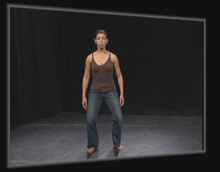
Figure 10 - Standing in the present: here and now
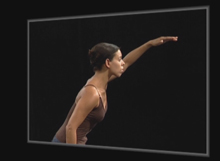
Figure 11 - Looking ahead to the future
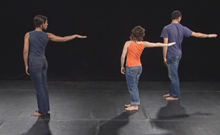
Figure 12 - 1,2,3 days/months/years ago
The performers may also make a modal use of space. Solid facts are firmly placed in front of them, in the maximum reality zone (Fr. zone proximale de réalité maximale). Anything that is less certain is located higher up or at a greater distance, along an oblique line.
The gesturing space can be used even more imaginatively to set up mental spaces (Fauconnier, 1997, p.11). Thus hands may trace an oval shape in the air to suggest that the space-builder if is used to open different kinds of fictive spaces in conditional if-constructions: If you come to my party, you'll have fun (conjures up a scene); If I were rich, I would live in San Francisco (evokes a dream). A plausible or realistic situation (going to a party) is within reach and therefore located close to the speaker. A more improbable situation (being rich) is more like a floating dream. It is not within easy reach. The space is drawn with a softer hand and located higher up, on the side.
Finally, space may be used to represent areas of knowledge and experience, as is in the wh- quest for meaning:
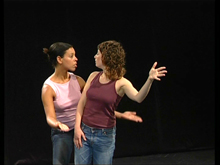
Figure 13 - Wh- question words Who? What? Where? When? How? Why? Looking for the missing pieces of information
References
ARNHEIM, Rudolf. 1969. Visual Thinking. Berkeley: The University of California Press
BIRDWHISTELL, Ray. 1970. Kinesics and Context. Essays on Body Motion Communication. Philadelphia: University of Philadelphia Press.
CROFT, William, CRUSE, Alan. 2004. Cognitive Linguistics. Cambridge: Cambridge University Press.
FAUCONNIER, Gilles, TURNER, Mark. 2002. The Way We Think. New York: Basic Books.
GIMSON, Alfred Charles. 1980. An Introduction to the Pronunciation of English. London: Edward Arnold.
GIVÓN, Talmy. 2001. Syntax. Vol. 2. Amsterdam : John Benjamins.
HANNAFORD, Carla. 2005. Smart Moves. Salt Lake City, Utah: Great River Books.
KEY, Mary. 1975. Paralanguage and Kinesics. Nonverbal communication. Metuchen, N.J.: The Scarecrow Press, Inc.
LAPAIRE, Jean-Rémi. 2002. "Imaginative Grammar." In Cognitive Linguistics Today. ód studies in language, 6. Barbara Lewandowska-Tomaszczyk & Kamila Turewicz (eds.). Frankfurt am Main: Peter Lang.
---- 2006. From sensory to propositional modality. Towards a phenomenology of epistemic modal meanings, in Corela, vol. 4, 1 (www.revue-corela.org).
LAPAIRE, Jean-Rémi, MASSE, Jean. 2006. Grammar in Motion. In La grammaire anglaise en mouvement. Lapaire, Jean-Rémi. Paris : Hachette Education.
MCNEILL, David. 1992. Hand and Mind. What Gestures Reveal about Thought. Chicago: The University of Chicago Press.
---- 2005. Gesture and Thought. Chicago: The University of Chicago Press.
PIAGET, Jean, INHELDER, Bärbel. 1966. La psychologie de l'enfant. Paris : P.U.F.
SWEETSER, Eve. 1990. From etymology to pragmatics. Metaphorical and cultural aspects of semantic structure. Cambridge: Cambridge University Press.
Pour citer cette ressource :
Jean-Rémi Lapaire, Theory of KineGrams, La Clé des Langues [en ligne], Lyon, ENS de LYON/DGESCO (ISSN 2107-7029), novembre 2007. Consulté le 21/12/2025. URL: https://cle.ens-lyon.fr/anglais/langue/linguistique/theory-of-kinegrams



 Activer le mode zen
Activer le mode zen